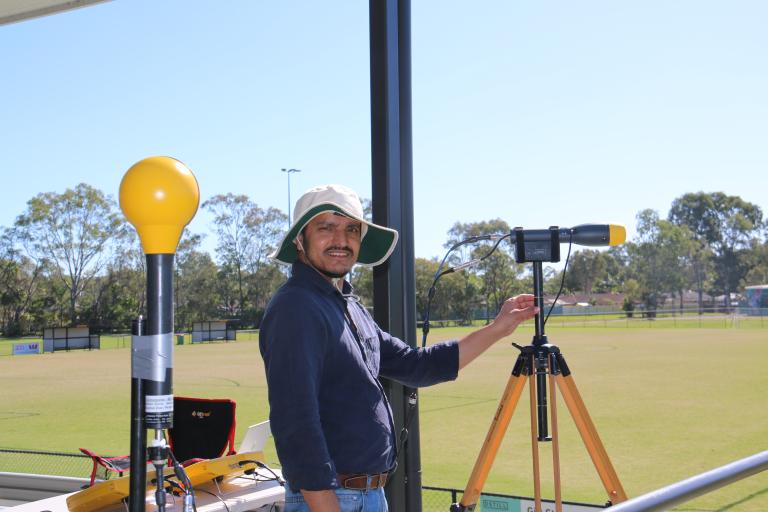Measuring and communicating Australia’s radiation risk

Scientists are accurately measuring and communicating levels of electromagnetic energy (EME) from 5G telecommunications services across the country. The scientists – from the Australian Radiation Protection and Nuclear Safety Agency (ARPANSA) – are doing so in collaboration with other Australian Government agencies, local governments, telecommunication providers and universities.
ARPANSA contributes to research, safety standards and public advice. The Australian Communications and Media Authority (ACMA) regulates mobile telecommunications. The Department of Infrastructure, Transport, Regional Development, Communications and the Arts provides public information on the research, regulation and safety of EME from telecommunications.

Dr Chhavi Bhatt from the Australian Radiation Protection and Nuclear Safety Agency measuring 5G radio waves
Image: ARPANSA
ARPANSA collected EME measurements from 50 publicly accessible sites across Melbourne in 2022, with results published in peer-reviewed journal ‘Radiation Protection Dosimetry’ in March 2023. The key finding was that the general public’s exposure to radio waves was less than 0.15% of the safety limit, or more than 700 times below the limit in all measured sites in Melbourne.
The EME checker webpage set up by the ACMA in August 2022 allows the public to check their exposure from nearby mobile phone base stations across Australia.
The ACMA’s broader EME measurement program continues, with results released through the checker. As at 30 June 2023, EME measurements had been undertaken at 506 non mmWave 5G enabled base stations around Australia. At 97% of the sites the average EME is less than 1% of ARPANSA’s limit. The highest level of EME measured so far is less than 3.2% of ARPANSA’s limit.
The Department of Infrastructure, Transport, Regional Development, Communications and the Arts has established a resource hub which includes simple-to-understand EME resources such as factsheets, videos, posters and translated materials. These resources provide factual information that includes ARPANSA’s safety standard and ACMA’s EME compliance activities. The department is also working with local governments and councils across Australia to equip communities with accurate information on the safety of EME from telecommunications. This information can, in turn, be used to address concerns that arise from telecommunications deployments in local areas.
Through ARPANSA’s Talk to a Scientist program, the public can speak directly to a radiation expert. The program receives approximately 800 enquiries each year. The positive impact of communications efforts to counter misinformation is evident. The program is receiving fewer phone calls about 5G, and more about ultraviolet radiation, which better reflects Australians’ true radiation risk.
Beyond monitoring EME for human impacts, ARPANSA also works collaboratively with universities, including Swinburne University of Technology, on research looking at the potential health effects of EME exposure on plants and animals.
See also
Australian Communications and Media Authority (2023) EME Checker, ACMA website, https://www.acma.gov.au/publications/2022-08/guide/eme-checker, accessed 6 October 2023.



